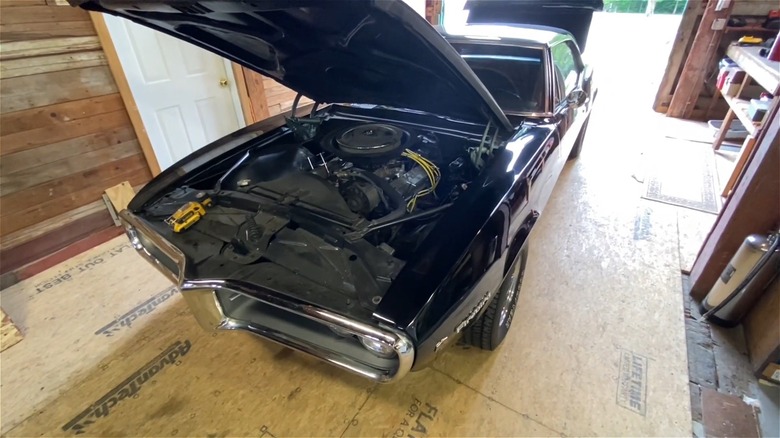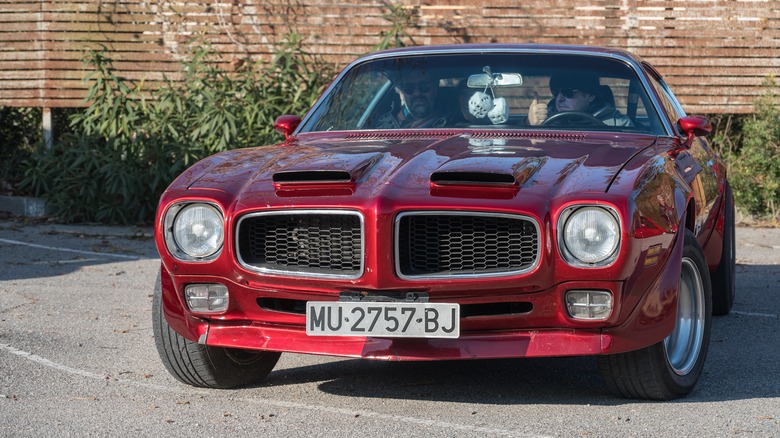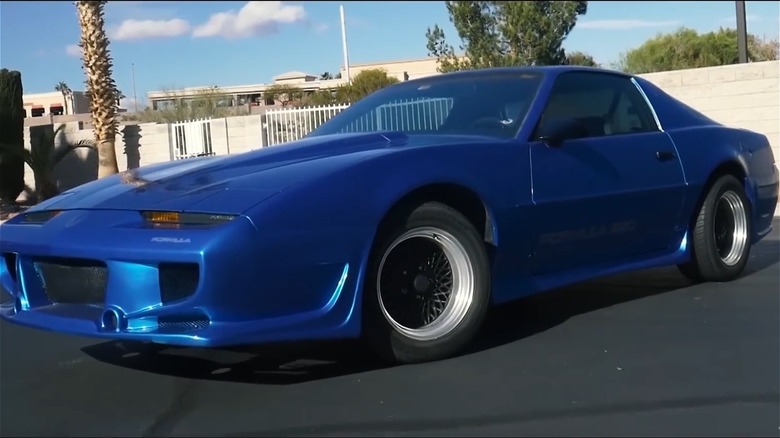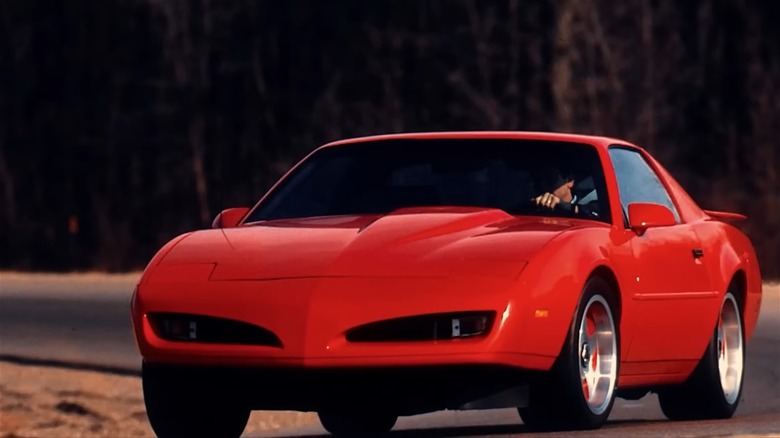4 Of The Most Powerful Engines Ever Put Into The Pontiac Firebird
The Pontiac Firebird debuted in 1967 during the classic muscle car era. With Chevy releasing their first-generation Camaro and Ford beefing up the popular Mustang with a big-block engine, the pony car craze was in full swing. And despite the prowess of the GTO, the 1967 Pontiac Firebird was a formidable competitor to the Ford Mustang.
In case you're wondering, there is a difference between the Pontiac Trans Am and Firebird, so this list will focus on the Firebird and not its more potent twin. The first Firebird offered one of its most monstrous engines right off the bat, but the notable Pontiac 400, Chevy 350, and L98 V8s would all make it under the hood over the coming decades. When looking back over the Pontiac Firebird's history, its lifespan included some significant performance ups and downs, but many enthusiasts can surely agree in the hope that we haven't seen the last of this indelible muscle car.
Pontiac 6.6-liter V8 with the Ram Air 400 package
Before the Trans Am trim arrived in 1969, the most robust engine available in the Firebird was a 400-cubic inch V8 that produced 325 horsepower and 410-pound feet of torque. This muscular engine featured a Ram Air add-on and only ended up in 65 of the Firebird models produced in 67. In comparison, the original base Firebird only offered a 3.8-liter inline six-cylinder, producing just 165 horsepower.
The Ram Air intake offered several benefits including enhanced performance, better cooling, and hood scoops. Despite the Mustang selling over 472,000 units in 1967 and the Firebird only moving around 82,560, Pontiac did manage to add an extra horsepower over its rival. It was clear that Pontiac was sending a message to Ford, and it was successful in cementing the Firebird into muscle car culture. In addition to the Firebird, the automaker has a rich history of performance, with Pontiacs most powerful engines launching in the 50s, 60s, and 70s.
Pontiac 400 V8
In 1970, Pontiac launched another variant of the Firebird, the Formula 400. It featured a 400-cubic inch Pontiac V8 that generated 330 horsepower and 430-pound feet of torque. Dave Peterson, an owner of an original 1970 Pontiac Firebird Formula 400, explained to Hot Rod that he wanted a Trans Am initially, but a Formula 400 "represented 95 percent of the performance of a Trans Am at almost a 25 percent discount."
There was also an option to add Ram Air to the Formula 400, which then utilized the striking hood scoops to pull in cool air into the four-barrel carburetor. According to Pontiac, while the Trans Am was considered the pinnacle, the Formula 400 could easily be the ideal muscle car experience for many drivers. An original 1970 article from Hot Rod put the Formula 400 to the test and recorded 15-second quarter mile times at 93 miles per hour. These figures didn't quite reach the same level as the automaker's top Firebird variant, but there are characteristics that make a Pontiac Firebird a Formula that is different from a Trans Am.
Chevy 350 V8
In the battle between the Mustang, Camaro, and Firebird, Pontiac finally upped the ante from its previously modest engine offerings to something more potent under the hood in 1987. After a lengthy hiatus, the Formula variant of the Firebird returned, continuing the theme of economical horsepower as it was a less expensive option when compared to the Trans Am. With a tuned-port-fuel-injected (TPI) 350, the Pontiac Firebird Formula could make around 225 horsepower and 310-pound feet of torque.
This iconic small-block V8 was used not only in the Firebird but also in the Camaro and Corvette. In fact, the Chevy 350 is one of the most popular engines ever made, and Chevrolet still offers a high-output 350 crate engine capable of 333 horsepower and 381-pound feet of torque. This particular Firebird was part of the evolution that led to continued performance enhancements into the 90s, where Pontiac went even further with the Gen-II Chevy small-block LT1 bumping horsepower to 275, and Gen-III Chevy LS1, which in the Formula model, could produce around 325 horsepower.
L98 5.7-liter V8
While the early 80s provided the iconic Pontiac Firebird Trans Am in the hit show "Knight Rider," it wasn't a great decade in terms of engine options. A dramatic change would occur with 1992's Pontiac Formula Firehawk, which was a limited-edition model developed by Street Legal Performance Inc. and sold by Pontiac dealers. The main objective of the automaker was to offer a sports car that could achieve the same level of performance available in the ZR-1 Corvette of the time but at a reduced price tag.
This Firebird utilized a 5.7-liter L98 Chevy V8, however it received some extensive modification from Street Legal Performance Inc. For example, the Firehawk features lighter aluminum components, ported cylinder heads, and a specialty intake system that includes multiple air cleaners. This resulted in 350 horsepower and 390-pound feet of torque, which was a long overdue return to muscle car form for the Firebird.
According to Car and Driver, this Formula Firehawk reached a blistering 158 miles per hour top speed and a 0-60 miles per hour time of just 4.6 seconds. This model also bested the 1970 Formula 400 by achieving a 13.2 second quarter mile at 107 miles per hour.




